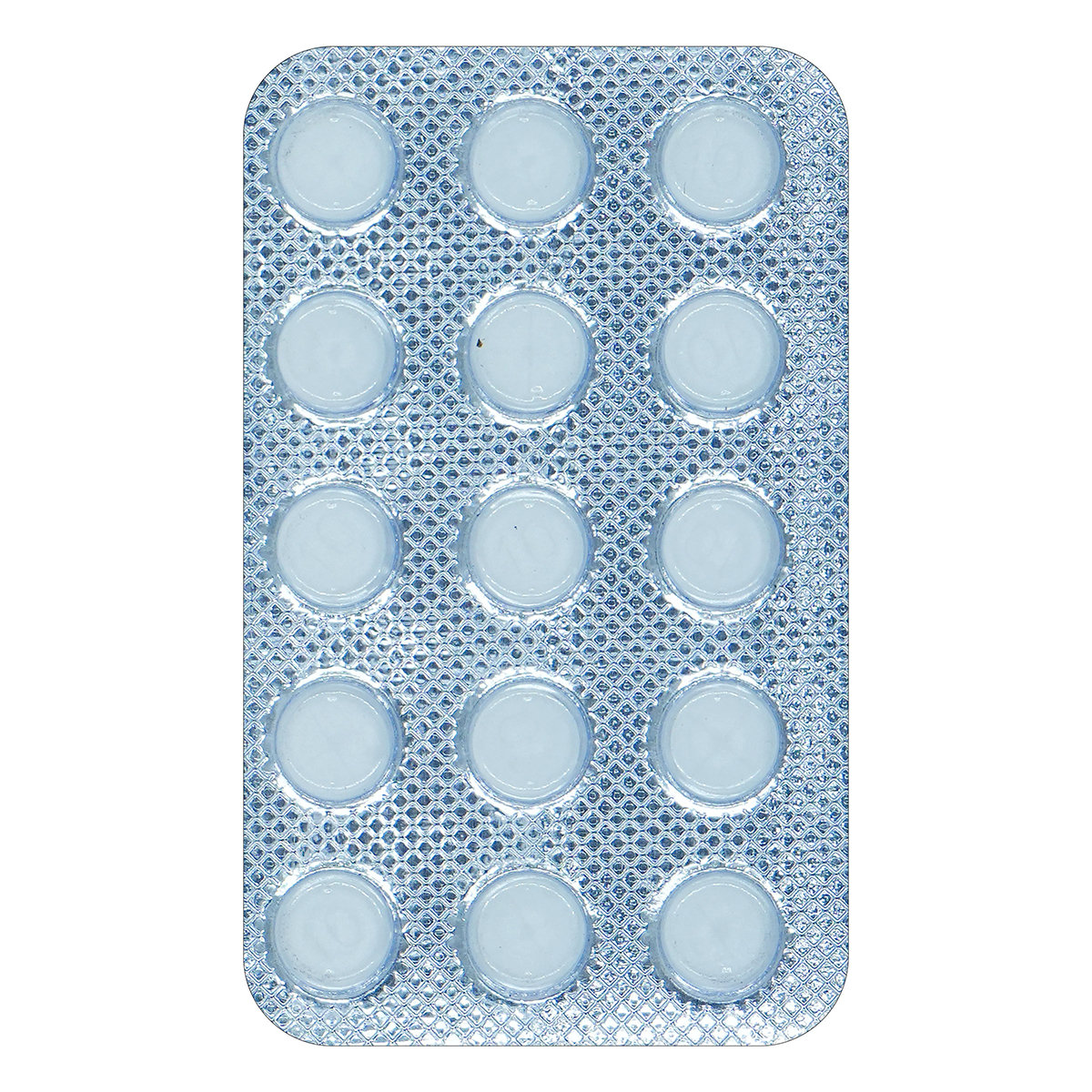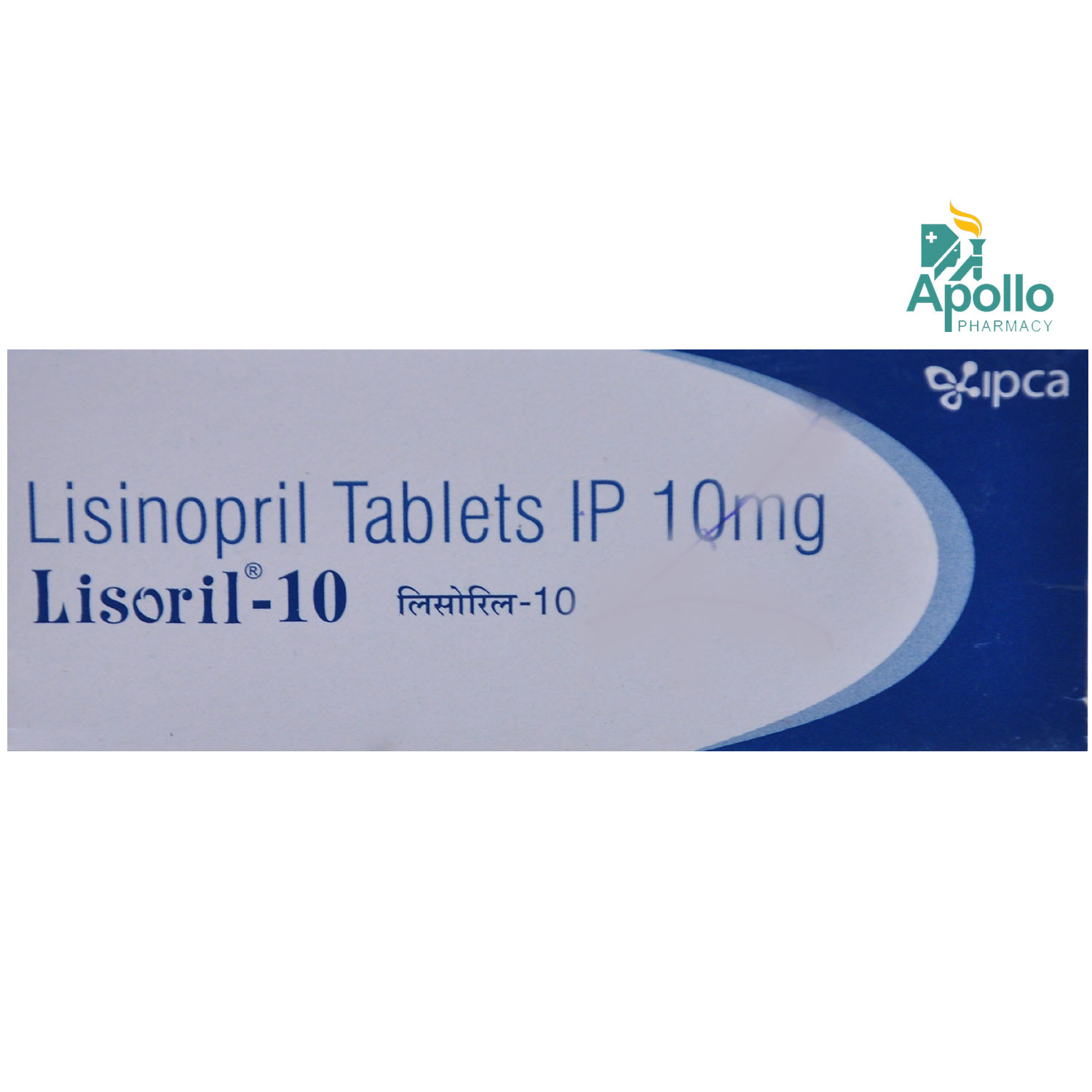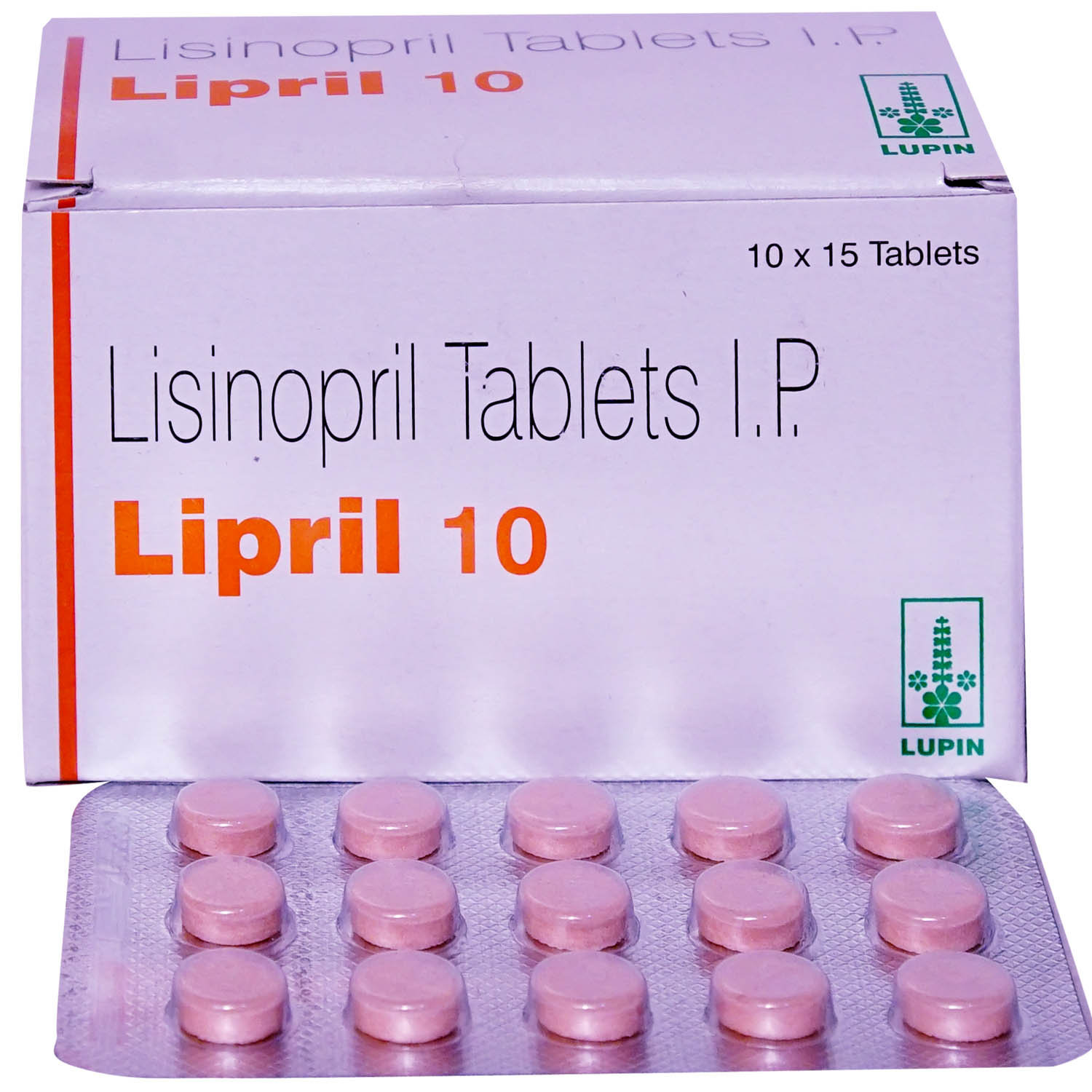Listril 10 Tablet


MRP ₹375.5
(Inclusive of all Taxes)
₹56.3 Cashback (15%)
know your delivery time
Provide Delivery Location
Composition :
Manufacturer/Marketer :
Consume Type :
Expires on or after :
Return Policy :

Secure Payment

Trusted by 8 Crore Indians

Genuine Products
Therapeutic Class
Country of origin
Manufacturer/Marketer address
Disclaimer
Alcohol
Safe if prescribed
You are recommended to avoid alcohol consumption while taking Listril 10 Tablet to avoid unpleasant side-effects. Alcohol intake might interfere with the working of Listril 10 Tablet . Please consult your doctor if you have any concerns regarding this.
Pregnancy
Consult your doctor
It is not recommended to take Listril 10 Tablet while you are pregnant. Please consult your doctor if you have any concerns regarding this, your doctor will decide whether Listril 10 Tablet can be given to pregnant women or not.
Breast Feeding
Consult your doctor
It is not recommended to take Listril 10 Tablet while you are breastfeeding. Please consult your doctor if you have any concerns regarding this, your doctor will decide whether Listril 10 Tablet can be given to breast-feeding mothers or not.
Driving
Safe if prescribed
Listril 10 Tablet may cause dizziness, do not drive or operate heavy machinery if you feel dizzy.
Liver
Consult your doctor
Dose adjustment may be needed. Listril 10 Tablet should be used with caution in patients with liver disease. Please consult your doctor if you have any concerns regarding this.
Kidney
Consult your doctor
Dose adjustment may be needed. Listril 10 Tablet should be used with caution in patients with kidney disease. Please consult your doctor if you have any concerns regarding this.
Children
Safe if prescribed
Listril 10 Tablet should not be used by children, as the efficacy and safety have not been established.
Product Substitutes
About Listril 10 Tablet
Listril 10 Tablet belongs to the group of blood pressure-lowering medications called 'Angiotensin-Converting Enzyme (ACE) Inhibitors' primarily used to treat high blood pressure (hypertension) and reduce the risk of having a heart attack, stroke, or heart failure. High blood pressure is a chronic condition in which the pressure in the blood vessels is high. The blood exerts high pressure on blood vessel walls (arteries), leading to hypertension. Heart failure can occur when your heart cannot pump the blood sufficiently required for the body's remaining. A heart attack or stroke is the blockage of blood flow to the heart muscle. The blockade usually occurs due to fat/cholesterol build-up in the coronary artery (which supplies blood to the heart).
Listril 10 Tablet contains lisinopril, which works by lowering the body’s production of substances that could increase blood pressure. Listril 10 Tablet relaxes and widens the blood vessels, making it easier for the heart to pump blood to all parts of the body, lowering the raised blood pressure and reducing the risk of heart failure, heart attack or stroke.
Take Listril 10 Tablet with or without food. Do not chew, crush, or break the tablet; swallow it as a whole with a glass of water. Take Listril 10 Tablet at the same time every day. Sometimes, you may experience common side effects like headache, dizziness, fatigue, and cough. Most of these side effects do not require medical attention and resolve gradually over time. Talk to your doctor if you experience these side effects persistently.
To treat your condition effectually, continue taking Listril 10 Tablet for as long as your doctor has prescribed it. Try not to stop taking it on your own as it may cause a sudden increase the blood pressure, chest pain or heart attack. Regular monitoring of blood pressure, electrolyte levels and kidney functioning is advised while taking Listril 10 Tablet . It would help to consume low table salt (sodium chloride) and a low-fat diet while taking Listril 10 Tablet . Avoid taking Listril 10 Tablet if you are pregnant or breastfeeding. Talk to your doctor. They may prescribe you alternate medicine. Listril 10 Tablet is not recommended for children below 18 years of age as efficacy and safety have not been established.
Uses of Listril 10 Tablet
Medicinal Benefits Mweb
Key Benefits
Listril 10 Tablet relaxes and widens the blood vessels making it easier for the heart to pump blood to all body parts. This helps lower blood pressure and the risk of a heart attack or stroke. Listril 10 Tablet helps reduce standing and lying down blood pressure without any orthostatic effect (a sudden decrease in blood pressure might occur when a person stands up suddenly). However, when dehydrated, Listril 10 Tablet may show an orthostatic effect. Continued usage of Listril 10 Tablet reduces the severity of heart failure, hospitalization rate and symptoms such as weakness and shortness of breath. Listril 10 Tablet is used alone or in combination with other medicines to treat high blood pressure.
Directions for Use
Side Effects of Listril 10 Tablet
- Headache
- Nausea
- Dizziness
- Weakness
- Hypotension (low blood pressure)
- Sinusitis (inflammation of the sinus)
- Shortness of breath
- Stomach pain
- Diarrhea
- Indigestion
- Skin rash
- Chest pain
- Muscle pain
- Hyperkalemia (increased levels of potassium in the blood)
- A dry cough that does not go away
- Kidney problems (shown in a blood test)
Drug Warnings
Do not take Listril 10 Tablet if you are allergic to Listril 10 Tablet or any of its contents. Talk to your doctor if you have heart, kidney or liver problems. Listril 10 Tablet may sometimes cause lower blood pressure than normal, especially in dehydrated people who take diuretics (medicines to treat oedema) and low sodium levels. Regularly check your blood pressure levels to avoid any risks. Avoid taking Listril 10 Tablet if you are pregnant or breastfeeding. Talk to your doctor. They may prescribe you alternate medicine. Listril 10 Tablet is not recommended for children below 18 years of age as efficacy and safety have not been established. Inform your doctor about your medications and your health condition to rule out any unpleasant side effects. Consult your doctor if you have lost a lot of body fluids through vomiting, diarrhoea, or sweating more than normal or if you are taking low water tablets to treat oedema (diuretics), or if you undergo dialysis. Stop taking Listril 10 Tablet one day before receiving an anaesthetic to undergo any surgery or dental procedure. Inform your doctor that you are taking Listril 10 Tablet . Regular monitoring of blood pressure, electrolyte levels and kidney functioning is advised while taking Listril 10 Tablet .
Drug-Drug Interactions
Drug-Drug Interactions
Login/Sign Up
Combining Aliskiren with Listril 10 Tablet can increase the potassium levels in the blood.
How to manage the interaction:
Although taking Aliskiren and Listril 10 Tablet together can result in an interaction, it can be taken if a doctor has prescribed it. However, consult a doctor if you experience symptoms including weakness, tiredness, confusion, numbness or tingling, and irregular heartbeats. Do not discontinue any medications without a doctor's advice.
Taking Tizanidine and Listril 10 Tablet may have additive effects in lowering the blood pressure.
How to manage the interaction:
Taking Tizanidine with Listril 10 Tablet together can possibly result in an interaction, but it can be taken if your doctor has advised it. However, consult our doctor immediately if you experience symptoms such as headache, dizziness, lightheadedness, fainting, and/or changes in pulse or heart rate. Do not discontinue any medications without consulting a doctor.
Taking Listril 10 Tablet with Eprosartan can increase the risk of high potassium levels.
How to manage the interaction:
Taking Listril 10 Tablet with Eprosartan together can possibly result in an interaction, but it can be taken if your doctor has advised it. it can be taken if your doctor has prescribed it. However, consult your doctor if you experience nausea, vomiting, weakness, confusion, tingling in your hands and feet, feelings of heaviness in your legs, a weak pulse, or a slow or irregular heartbeat. Do not discontinue any medications without consulting a doctor.
Taking Potassium chloride with Listril 10 Tablet can increase the risk of high potassium levels which may increase the risk of side effects.
How to manage the interaction:
Although taking Listril 10 Tablet and Potassium chloride together can cause an interaction, it can be taken if a doctor has suggested it. However, consult the doctor if you experience nausea, vomiting, weakness, confusion, tingling in your hands and feet, feelings of heaviness in your legs, a weak pulse, or a slow or irregular heartbeat. Do not discontinue any medications without a doctor's advice.
Taking leflunomide with Listril 10 Tablet affects the liver and may increase the risk of liver problems.
How to manage the interaction:
Taking Leflunomide with Listril 10 Tablet together can possibly result in an interaction, but it can be taken if your doctor has advised it. However, consult the doctor immediately if you experience symptoms such as fever, chills, joint pain or swelling, unusual bleeding or bruising, skin rash, itching, loss of hunger, weakness, nausea, vomiting, abdominal pain, dark colored urine, light colored stools, and/or yellowing of the skin or eyes. Do not discontinue any medications without consulting a doctor.
Taking Listril 10 Tablet with Mipomersen affects the liver and may increase the risk of liver problems.
How to manage the interaction:
Co-administration of Listril 10 Tablet with Mipomersen can possibly result in an interaction, but it can be taken if your doctor has advised it. However, consult the doctor immediately if you experience symptoms such as fever, chills, joint pain or swelling, unusual bleeding or bruising, skin rash, itching, loss of hunger, tiredness, nausea, vomiting, abdominal pain, dark colored urine, light colored stools, and/or yellowing of the skin or eyes. Do not discontinue any medications without consulting a doctor.
Taking Listril 10 Tablet with Trimethoprim may increase potassium levels in the blood.
How to manage the interaction:
Although taking Trimethoprim and Listril 10 Tablet together can evidently cause an interaction, it can be taken if your doctor has suggested it. However, consult the doctor immediately if you experience nausea, vomiting, weakness, confusion, tingling of the hands and feet, feelings of heaviness in the legs, a weak pulse, or a slow or irregular heartbeat. Do not stop using any medications without consulting doctor.
Taking Listril 10 Tablet with potassium phosphate may increase potassium levels in the blood.
How to manage the interaction:
Co-administration of Listril 10 Tablet with potassium phosphate can possibly result in an interaction, but it can be taken if your doctor has advised it. However, consult the doctor immediately if you experience nausea, vomiting, weakness, confusion, tingling of the hands and feet, feelings of heaviness in the legs, a weak pulse, or a slow or irregular heartbeat. Do not stop using any medications without consulting doctor.
Co-administration of Azilsartan medoxomil with Listril 10 Tablet can increase potassium levels in the blood.
How to manage the interaction:
Although taking Azilsartan medoxomil with Listril 10 Tablet can result in an interaction, it can be taken if a doctor has prescribed it. However, consult a doctor if you experience vomiting, weakness, confusion, tingling in your hands and feet, or palpitations. Do not discontinue any medications without consulting a doctor.
Coadministration of Listril 10 Tablet and Valsartan may increase the risk of side effects (low blood pressure, kidney function impairment, hyperkalemia (high blood potassium).
How to manage the interaction:
Although taking Listril 10 Tablet together with Valsartan may result in an interaction, they can be taken together if prescribed by a doctor. However, contact a doctor immediately if you experience symptoms, such as nausea, vomiting, confusion, numbness, tingling in hands and feet, and irregular heartbeat, contact a doctor. Do not discontinue any medication without consulting a doctor.
Drug-Food Interactions
Drug-Food Interactions
Login/Sign Up
Lentils, Orange Juice, Oranges, Raisins, Potatoes, Salmon Dried, Spinach, Sweet Potatoes, Tomatoes, Coconut Water, Beans, Beetroot, Broccoli, Bananas, Apricots, Avocado, Yogurt
How to manage the interaction:
Consuming potassium rich diet when on treatment with Listril 10 Tablet can increase the potassium levels in the blood. Although there is a possible interaction, Listril 10 Tablet can be taken on doctor's advice with limiting potassium-containing food. If you experience any unusual effects like weakness, tiredness, confusion, numbness or tingling, and irregular heartbeats, consult a doctor. Do not discontinue any medication without doctor's advise.
Drug-Diseases Interactions
Drug-Diseases Interactions
Login/Sign Up
Drug-Drug Interactions Checker List
- VALSARTAN
- ASPIRIN
- NAPROXEN
- INDOMETHACIN
- IBUPROFEN
- SILDENAFIL
- ALLOPURINOL
- SITAGLIPTIN
- METFORMIN
- INSULIN GLARGINE
- FUROSEMIDE
- ALISKIREN
- LITHIUM
- POTASSIUM
- SACUBITRIL
Habit Forming
Special Advise
- Regularly monitor blood pressure levels to prevent hypotension (low blood pressure).
- Get up slowly while rising from a lying or sitting position, as the Listril 10 Tablet may cause dizziness.
- Keep your doctor informed about your health/disease conditions and your medicines.
- Avoid consuming potassium-rich food, such as bananas, broccoli, almonds, avocado and potassium supplements.
- To treat your condition effectually, continue taking Listril 10 Tablet for as long as your doctor has prescribed it.
- Try not to stop taking it on your own as it may cause a sudden increase the blood pressure, chest pain, or heart attack.
- Your doctor may advise you to get a regular kidney function test and potassium levels in the body while taking Listril 10 Tablet .
Diet & Lifestyle Advise
- You are advised to consume low salt and low-fat diet while taking Listril 10 Tablet .
- Regular exercise is also recommended to complement treatment with Listril 10 Tablet .
- Eat a diet rich in whole grains, vegetables, and fruits.
- Avoid smoking and alcohol consumption.
- Maintain a healthy weight with proper diet and exercise.
- Managing stress with meditation, yoga, and massage would also help treat high blood pressure.
All Substitutes & Brand Comparisons
RX
Out of StockCIPRIL 10MG TABLET
Cipla Ltd
₹44.6
(₹3.92 per unit)
82% CHEAPERRX
Out of StockStayHappi Lisinopril 10mg Tablet
₹54
(₹4.86 per unit)
78% CHEAPERRX
Out of StockLispres 10mg Tablet
J B Chemicals & Pharmaceuticals Ltd
₹61
(₹5.49 per unit)
75% CHEAPER

Have a query?
Buy best Cardiology products by
Torrent Pharmaceuticals Ltd
Sun Pharmaceutical Industries Ltd
Lupin Ltd
Intas Pharmaceuticals Ltd
Cipla Ltd
Micro Labs Ltd
Macleods Pharmaceuticals Ltd
Abbott India Ltd
Ajanta Pharma Ltd
Ipca Laboratories Ltd
Eris Life Sciences Ltd
Mankind Pharma Pvt Ltd
Lloyd Healthcare Pvt Ltd
Dr Reddy's Laboratories Ltd
Glenmark Pharmaceuticals Ltd
Emcure Pharmaceuticals Ltd
Alembic Pharmaceuticals Ltd
Alkem Laboratories Ltd
East West Pharma India Pvt Ltd
USV Pvt Ltd
Zydus Healthcare Ltd
Aristo Pharmaceuticals Pvt Ltd
Elbrit Life Sciences Pvt Ltd
J B Chemicals & Pharmaceuticals Ltd
Zydus Cadila
Akumentis Healthcare Ltd
Alteus Biogenics Pvt Ltd
Hbc Life Sciences Pvt Ltd
Fusion Health Care Pvt Ltd
Troikaa Pharmaceuticals Ltd
La Renon Healthcare Pvt Ltd
Corona Remedies Pvt Ltd
Jubilant Lifesciences Ltd
Medley Pharmaceuticals Ltd
Knoll Healthcare Pvt Ltd
Msn Laboratories Pvt Ltd
Zuventus Healthcare Ltd
Cadila Pharmaceuticals Ltd
Blue Cross Laboratories Pvt Ltd
Lividus Pharmaceuticals Pvt Ltd
Morepen Laboratories Ltd
Ranmarc Labs
Shrrishti Health Care Products Pvt Ltd
Sanofi India Ltd
Steris Healthcare
Elder Pharmaceuticals Ltd
Primus Remedies Pvt Ltd
Unison Pharmaceuticals Pvt Ltd
Eswar Therapeutics Pvt Ltd
Knoll Pharmaceuticals Ltd
Tas Med India Pvt Ltd
Systopic Laboratories Pvt Ltd
Indiabulls Pharmaceuticals Pvt Ltd
Leeford Healthcare Ltd
Sinsan Pharmaceuticals Pvt Ltd
Biochem Pharmaceutical Industries Ltd
Cadila Healthcare Ltd
Azkka Pharmaceuticals Pvt Ltd
Nirvana India Pvt Ltd
Orsim Pharma
Prevego Healthcare & Research Pvt Ltd
Econ Healthcare
Elinor Pharmaceuticals (P) Ltd
FDC Ltd
Sunij Pharma Pvt Ltd
Nicholas Piramal India Ltd
Astra Zeneca Pharma India Ltd
Pfizer Ltd
Lia Life Sciences Pvt Ltd
Shine Pharmaceuticals Ltd
Elicad Pharmaceuticals Pvt Ltd
Indoco Remedies Ltd
Proqol Health Care Pvt Ltd
Vasu Organics Pvt Ltd
Biocon Ltd
Opsis Care Lifesciences Pvt Ltd
Johnlee Pharmaceuticals Pvt Ltd
Merck Ltd
Wockhardt Ltd
Auspharma Pvt Ltd
Ergos Life Sciences Pvt Ltd
Lakshya Life Sciences Pvt Ltd
Ordain Health Care Global Pvt Ltd
Pficus De Med Pvt Ltd
ALICAN PHARMACEUTICAL PVT LTD
RPG Life Sciences Ltd
Glynis Pharmaceuticals Pvt Ltd
Orris Pharmaceuticals
Samarth Life Sciences Pvt Ltd
Aprica Pharmaceuticals Pvt Ltd
Aretaeus Pharmaceuticals Pvt Ltd
Koye Pharmaceuticals Pvt Ltd
Neocardiab Care
Retra Life Science Pvt Ltd
Alniche Life Sciences Pvt Ltd
Alvio Pharmaceuticals Pvt Ltd
Arkas Pharma Pvt Ltd
Atos Lifesciences Pvt Ltd
Divine Savior Pvt Ltd
Metalis Lifesciences Pvt Ltd
Customers Also Bought
Recommended for a 30-day course: 2 Strips







